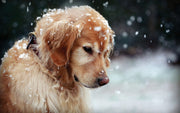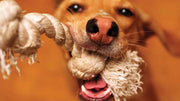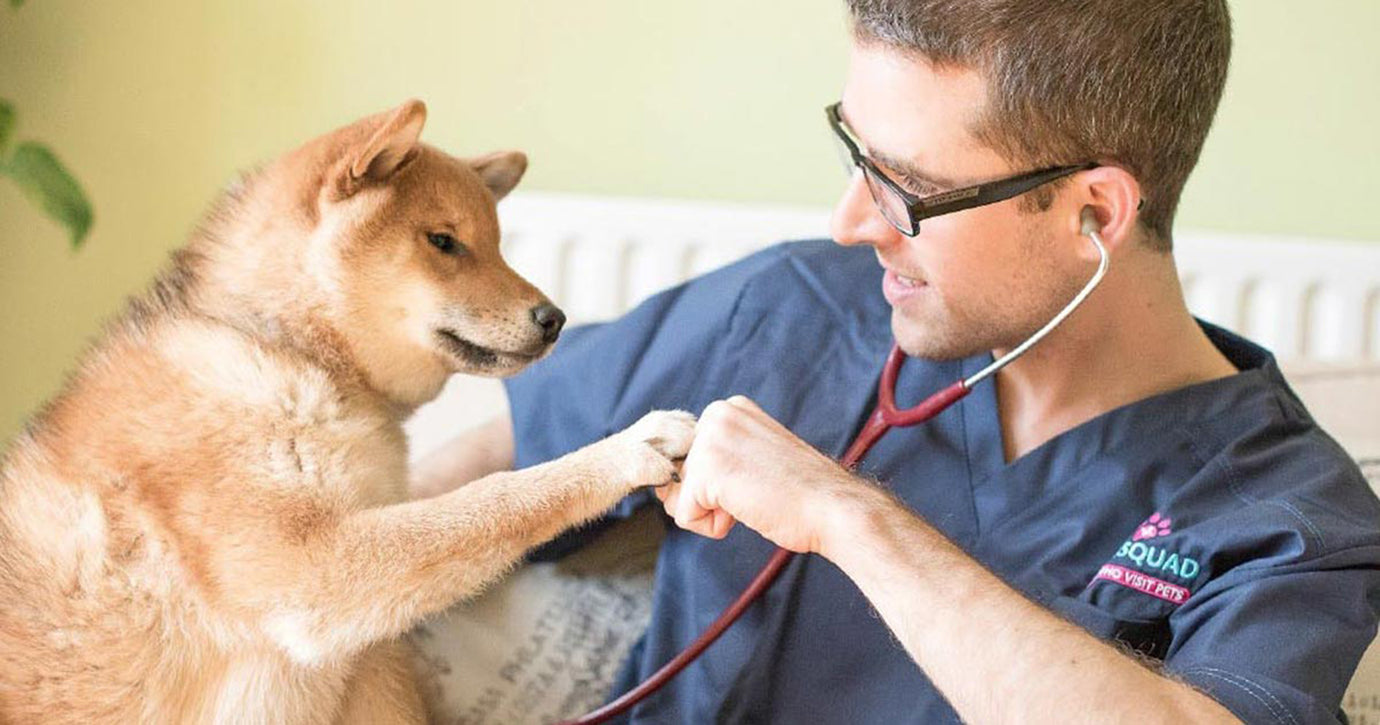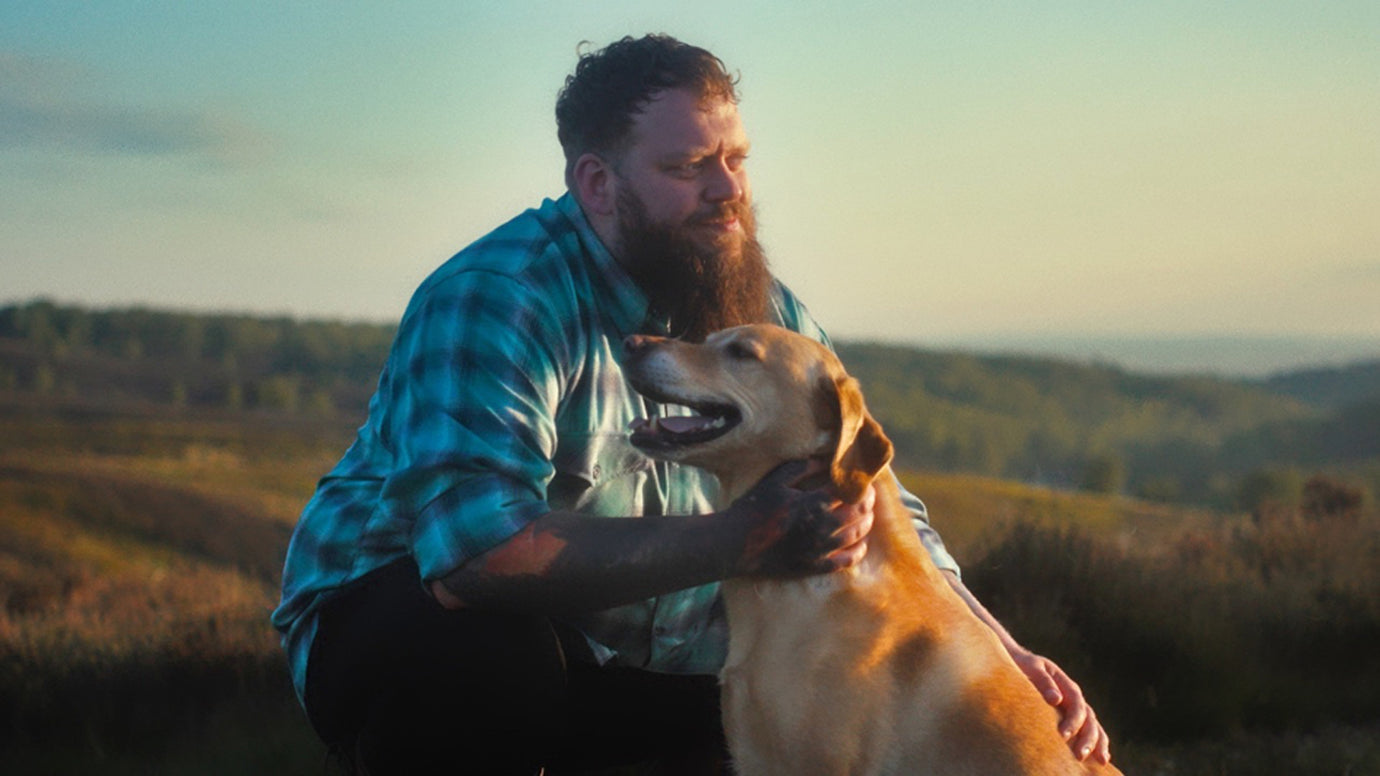‘The Nanny Dog’ - Staffies, They’re softer than you think
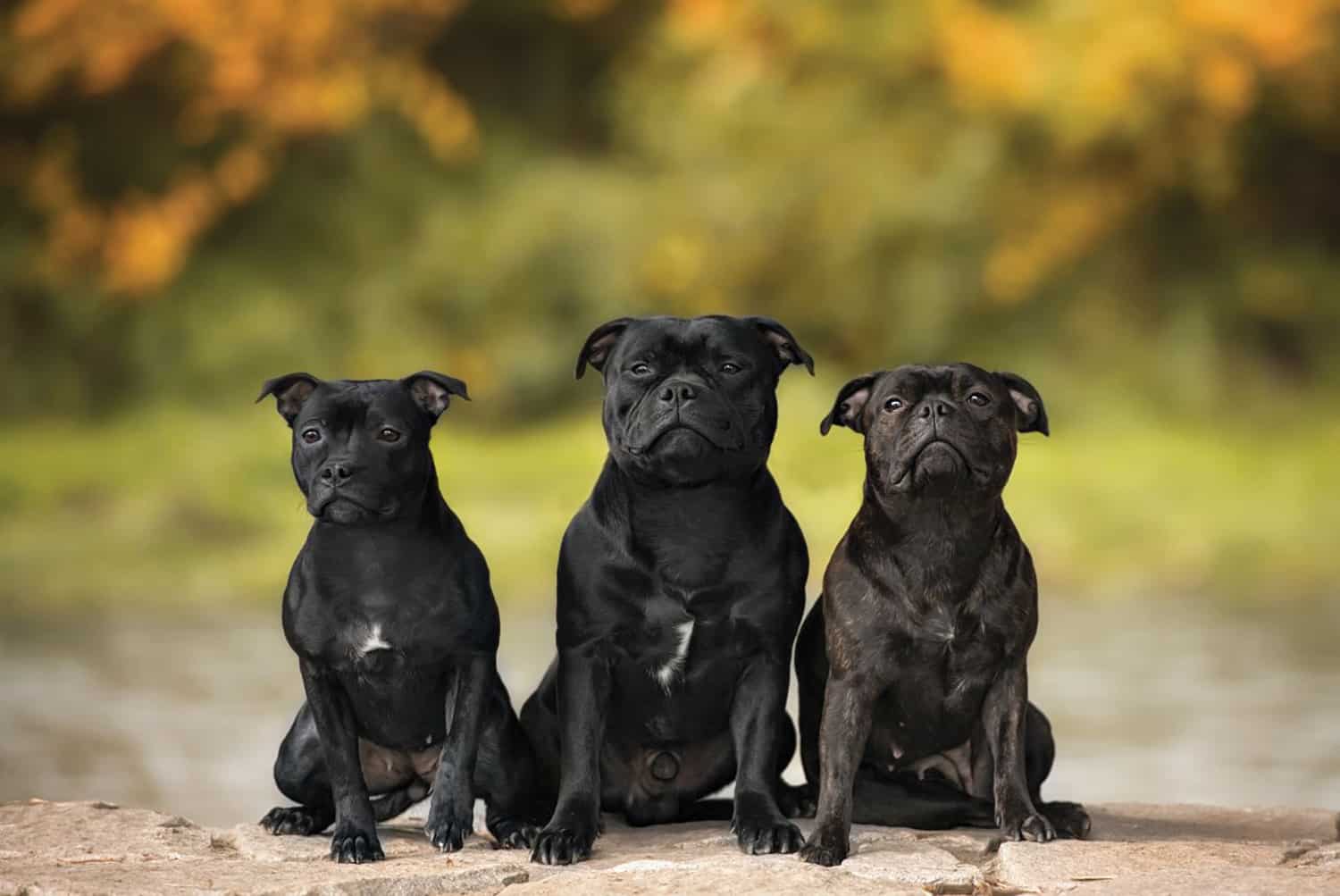
The Staffordshire Bull Terrier’s reputation is built on hearsay rather than fact. On the way it looks, rather than the way it acts. It is often identified incorrectly. In reality, many of the dogs that show aggression are bull breed crosses. The purebred Staffie is a whole different ball game. It has a nickname, ‘The Nanny Dog’. To understand more about caring for dogs with unique needs, read about this animal hospital where owners can stay overnight.
That nickname came about because this breed is known to be so good with children. The Staffie is the breed that is recommended for a family with young children by many of the welfare and re-homing organisations. These organisations and rescue centres believe it is probably one of the best family dogs of all the dog breeds. It is the only breed that has been described as “Totally loving to its family “, and is the only dog to have “totally reliable” in its breed description and standard. The very breed that many describe as vicious, unreliable and a killer.
The Kennel Club describes the breed’s suitability to young children. One of only two breeds, to have this recommendation. So how did it become so good with children and adults, and why is it such a loyal and loving family dog?
For that answer, we have to look at how the breed started, what shaped its temperament, size, nature and behaviour. For within that information lies the key to its genetic and social temperament and disposition.
Introduction
Staffordshire Bull Terriers have consistently been one of the most popular choices of terriers around and for good reason. They are renowned for the kind natures when they are around people. Staffies have also become one of the most popular and favourite dogs in the show ring and luckily, this has not affected their traditional strong, rugged, muscular and what has become much loved looks.
Staffies are fun to be around and although boisterous by nature, with the correct breeding, handling and training these small to medium sized dogs develop into lovely characters that boast big personalities. Staffies like nothing more than a warm lap to curl up on and an owner they can look up to with loyalty and devotion for all the direction and guidance they need.
History
Originally bred for blood sports, it is generally accepted that Staffordshire Bull Terriers came about by crossing a Bulldog with a terrier type to create a dog which was used for dog fighting and bull baiting, both popular sporting entertainments in the 19th century. However, by around 1835, animal fighting was outlawed although it still took place in secret and more frequently in the poorer areas of a city or town. As such dogs of this type grew in popularity although many of them did not survive in the ring or were cast aside for having lost a contest.
It was only in the 1930's that the Kennel Club officially recognised the Staffordshire Bull Terrier as a breed in its own right, with the breed standards having been developed by a group of enthusiasts in the Midlands later that year. While the heritage of the Staffie is one of fighting other dogs and animals, this noble dog was recognised for its malleable personality and eagerness to please which has led to their popularity the world over.
Appearance
Height at the withers: Males 36 - 41 cm, Females 33 - 38 cm
Average Weight: Males 13 - 17 kg, Females 11 - 15.4 kgStaffies are small to medium sized dogs that boast a compact, stocky and muscular appearance which gives them their tenacious look. They boast a broad skull with pronounced cheeks and short foreface with a very distinct stop that's unique to the breed. They have black noses and dark coloured eyes although some dogs with lighter coats may have lighter coloured eyes which is totally acceptable as a breed standard.
Eyes are nicely rounded and medium in size with dark rims which are set in a dog's head which means they look nicely to the front. A Staffie's ears can be half pricked or upright and nicely proportioned in relation to their head. They have ultra-strong jaws with a perfect scissor bite and very strong, muscular short necks that go down to broad and powerful shoulders.
A Staffordshire Bull Terrier boasts strong forequarters with well boned legs that are set wide apart. Their feet turn ever so slightly outwards and their shoulders are powerful and well laid back. Their body is nicely proportioned and well defined with a deep brisket and strong rib cage.
Their hindquarters are extremely muscular and built to provide dogs with a lot of power when needed. Their feet are very well padded and medium in size being very strong and nails are always black. Staffies have medium length, straight tails that they carry quite low in relation to their bodies.
Temperament
Staffies are known for their bold and courageous natures, but the breed is also renowned for being totally reliable and intelligent. However, Staffies need to be handled and trained correctly because they are such smart dogs which in short means they are quick to learn new things and this includes the good and the bad. With this said, a well-bred and well socialised Staffie is a real pleasure to be around. Their reputation for being aggressive by nature is totally unfounded.
Again, being intelligent dogs, Staffies are easy to train and this includes house training puppies. They just love being around people and don't do well when left on their own for any length of time which could lead to destructive behaviours around the home. Staffies just cannot help themselves when it comes to showing their affection and will jump up so they can lick your face, something that even the best trained Staffie cannot resist doing because it's just part of their loving personalities.
The "bad" press the breed has been given over recent years is not merited or well-founded because Staffordshire Bull Terriers when well trained and cared for make for wonderful, well-behaved and affectionate family pets that boast endless amounts of energy and enthusiasm for life. They are a real pleasure to have around and share a home with.
Staffies need to be well socialised from a young age for them to accept being around other family pets and any introductions to new animals has to be done gently, carefully and slowly to avoid any aggressive behaviour. In general, when well handled, the Staffie shows a gentle and exceptionally loyal nature, especially to one person which is typically the person who feeds them. They will also learn to obey commands relatively quickly but be warned - they can have a stubborn streak and can choose to ignore you if they want!
They are also powerful chewers and will resort to chewing anything they can find around the home if left alone for long periods of time. This is simply because Staffies quickly become bored or stressed when left to their own devices. They also need to chew on things to keep their teeth healthy and in good condition. Chewing also helps older Staffies stay relaxed when they are feeling any stress.
Intelligence / Trainability
Staffies are intelligent dogs and in the right hands with the correct amount of training, they are quite easy to train. However, Staffies are known to have a stubborn streak in them which means they need to be handled with a firm, yet gentle hand. Getting a dog to focus can be problematic especially when Staffies are still young because they can be boisterous and quite headstrong as puppies and in their "teenager" years. With this said, once you've got their attention they will listen and learn, but it's essential for Staffordshire Bull Terriers to be well socialised from a young age for them to be more manageable adult dogs.
Children and other pets
The Staffordshire Bull Terrier is known to be kind towards children although because they are also known to play rough and therefore boisterous at times, Pets4homes advises that Staffies are not the best choice for families with babies or very young children. Anyone who already shares a home with a Staffie and who have younger children should always make sure they are never left together unattended. It is also crucial for parents to teach young children how to behave around dogs and when to stay away from them, particularly when there is food around or during playtime.
Staffies need to be well-socialised when they are still puppies and introduced to as many other animals and situations as possible for them to be well-rounded mature dogs. However, they can show aggression towards other pets which is why it's important they be introduced to each other slowly and carefully to make sure things go smoothly and that no pets get stressed out which could lead to aggressive behaviour.
Health
The average life expectancy of a Staffordshire Bull Terrier is between 12 - 14 years when properly cared for and fed an appropriate good quality diet to suit their ages. Explore suitable food options for your Staffordshire Bull Terrier here.
Although a healthy breed, the Staffie is known to suffer from a few hereditary and acquired health issues which are worth knowing about if you have decided to share a home with one of these delightful and affectionate dogs. The most commonly seen health disorders are as follows:
• Hereditary cataracts (HC) - tests are available
• L-2- hydroxyglutaric sciduria (L2HGA) - a metabolic health issue - DNA test available
• Distichiasis
• Persistent Hyperplastic Primary Vitreous (PHPV) - tests available throughout a dog's life
• Mastocytoma (mast cell tumours)Caring for a Staffordshire Bull Terrier
As with any other breed, Staffies need to be groomed on a regular basis to make sure their coats and skin are kept in tip-top condition. They also need to be given regular daily exercise so they remain fit and healthy. On top of this, Staffordshire Bull Terriers need to be fed a good quality diet throughout their lives to ensure all their nutritional needs are met.
Grooming
Having a short coat means the Staffie is not a high maintenance dog when it comes to grooming. A weekly brush is all it takes to keep their coats and skin in good condition. The same can be said for bathing them which should only really need to be done from time to time. Overbathing a Staffie can destroy all the natural oils found in their skin and coats, upsetting the PH balance and this can result in a dog developing skin allergies. As with other dogs, Staffies shed more during the Spring and then again in the Autumn which is when more regular grooming is needed to keep on top of any loose hair.
Exercise
The Staffordshire Bull Terrier is a high-energy dog and needs to be given a minimum of an hour a day when it comes to exercise or boredom will set in leading to some unwanted and often destructive behaviours. The more exercise a Staffie is given, the better and more relaxed a dog would be and the old adage of a "tired dog being a good dog" is never truer than when it comes to these energetic little dogs. Because they are such intelligent dogs, they also need to be given lots of mental stimulation for them to be truly happy, relaxed and well-balanced dogs. After a good amount of physical exercise and playing lots of interactive games, a Staffie likes nothing more than to relax on a couch with their owner, tired, but an extremely happy dog. Find a variety of non-food pet supplies to keep your Staffie engaged and happy.
Feeding
Staff puppies need to be fed a good quality diet that provides them with all the vitamins, minerals and other nutrients they need to grow and develop properly. Ideally, puppies need to be at least 3 to 4 times day. If you are just about to get a puppy from a breeder, they would recommend you feed them the same diet as they have been on and to gradually change this over a period of a few weeks to avoid the puppy developing a tummy upset.
However, adult Staffies can also be fed a small breakfast and then another meal in the evening, but again their diet needs to be higher in protein because they are such energetic dogs and need the extra nutrients to meet their daily needs. The one constant no matter whether you feed a Staffordshire Bull Terrier wet or dry food, you have to make sure they always have access to fresh, clean water at all times.
Average Cost to keep/care for a Staffordshire Bull Terrier
A well-bred Staffordshire Bull Terrier can cost you anything from £250 to well over £1000 for a pedigree puppy. The cost of insuring a 3 year old Staffie in the north of England would be £20.76 for basic cover up to £40.81 a month for a lifetime policy (quote as of March 2016). It's worth bearing in mind that lots of things are factored into a pet's insurance premium and this includes where you live in the UK and a dog's age.
When it comes to food costs, you would need to buy the best quality dog food whether wet or dry for your dog throughout their lives and to suit the different stages of their lives. This would set you back between £30-£40 per month.
On top of all of this, you would need to factor in veterinary costs if you want to share your home with a Staffie and this includes their initial vaccinations, neutering or spaying a dog when the time is right and then their annual health checks, all of which quickly adds up to over a £800 a year.
The total average cost to keep and care for a Staffordshire Bull Terrier as a rough guide would be in the region of £50 - £100 a month depending on the level of pet insurance cover you opt to buy, but this does not include the initial cost of buying a pedigree Staffordshire Bull Terrier puppy.
(Article source: Pets 4 Homes)
